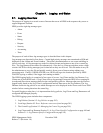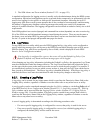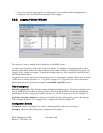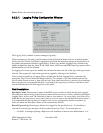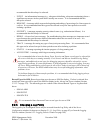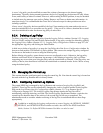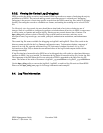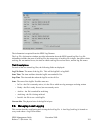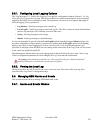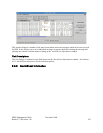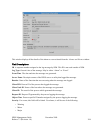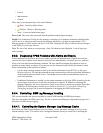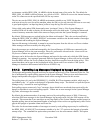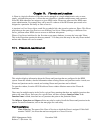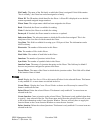
9.5.1. Configuring Local Logging Options
The “Log Messages To:” field in the Logging Client specific configuration window (Section 5.1.4: Log
Client Specific Configuration on page 100) can be modified to control the destinations for the messages
logged by the HPSS servers running in a node. This parameter consists of a set of options that apply to
the local logging. These options are:
• Log Daemon - Send log messages to the central log.
• Local Logfile - Send log messages to the local log file. This file is written in round-robin fashion,
and new log messages will eventually overwrite older ones.
• Syslog - Send log messages to the syslog.
• Stdout - Send log messages to standard output.
It is not recommended to specify both the Local Logfile and the Standard Output (Stdout) options, but
any other combination of these options is supported. If neither the Local Logfile option nor the Syslog
option is specified, no local logging will occur to a local log file. If the Log Daemon option is not
specified, no messages from the HPSS servers running on the same node as the Log Client will be written
to the central log (logfile01/logfile02).
The administrator should choose the local logging options that will satisfy the site’s need. After a Log
Client’s configuration parameter has been changed, the Log Client must be reinitialized.
The syslog option should be used with care. The syslog file will grow without bound until
deleted/ truncated, or until the file system runs out of space.
9.5.2. Viewing the Local Log
The local log file is an ASCII text file and can be viewed as such. The name of the local log file is
specified in the Log Client’s configuration entry.
9.6. Managing SSM Alarms and Events
This section describes how to manage SSM alarms and events.
9.6.1. Alarms and Events Window
HPSS Management Guide November 2009
Release 7.3 (Revision 1.0) 302



